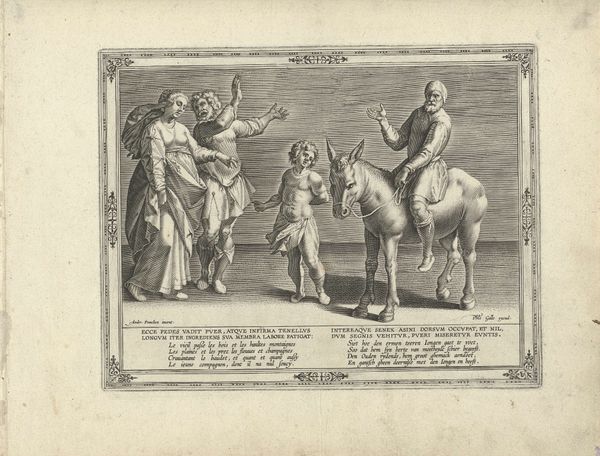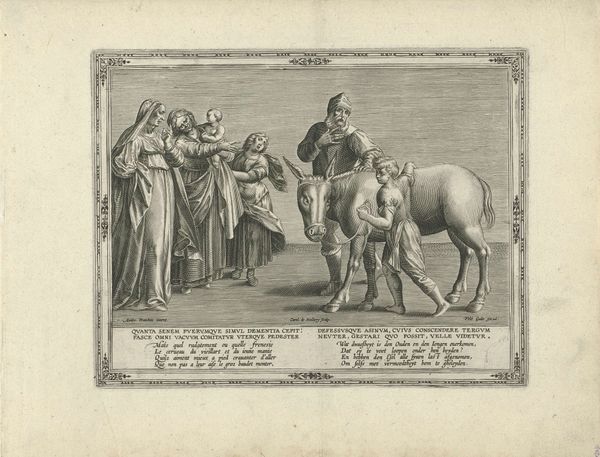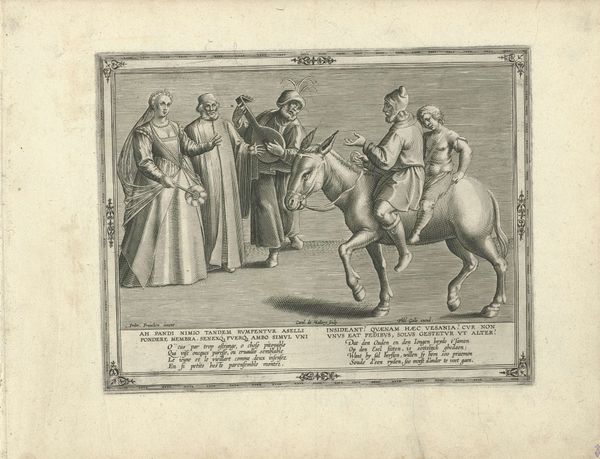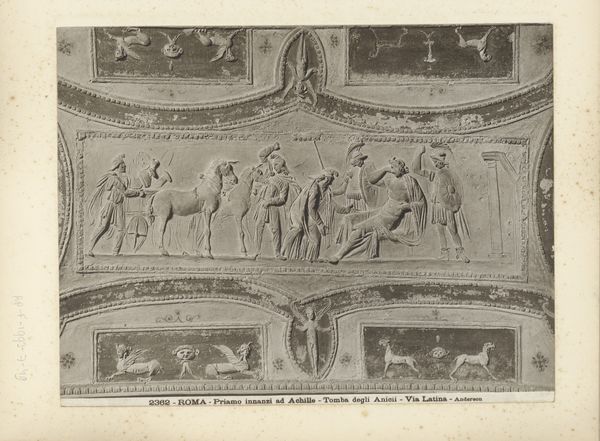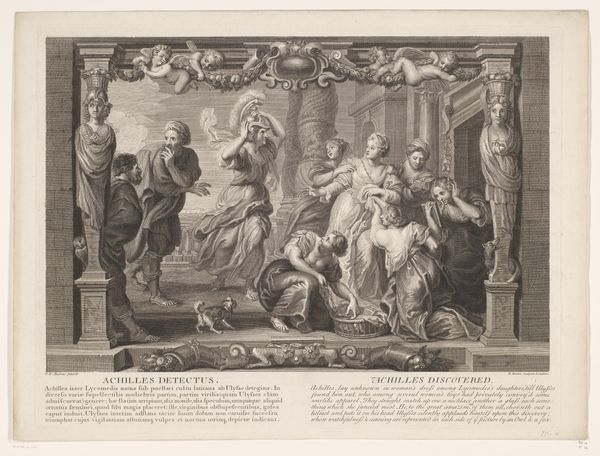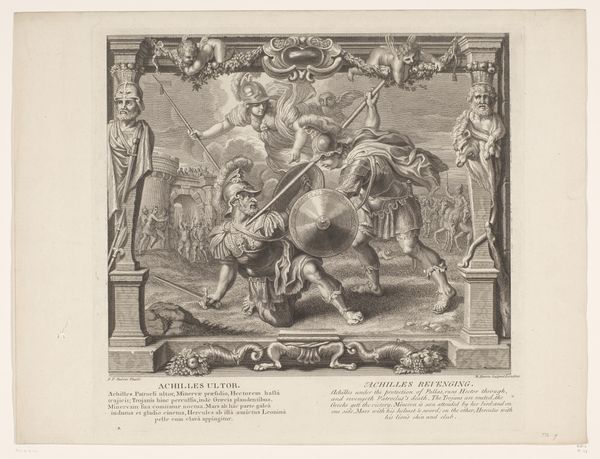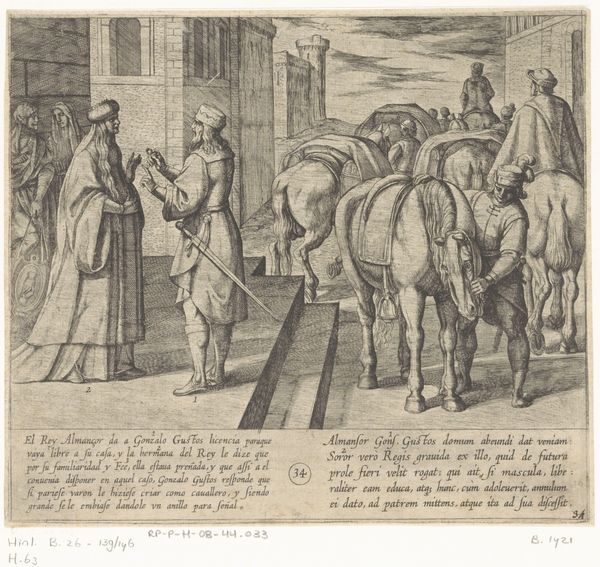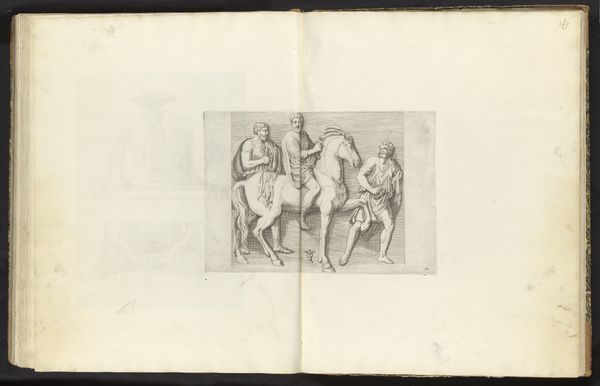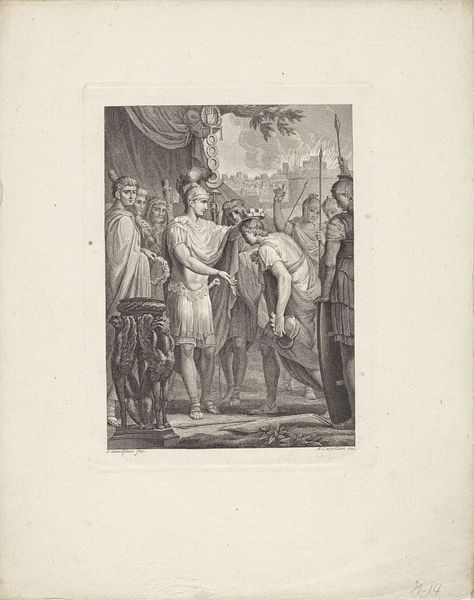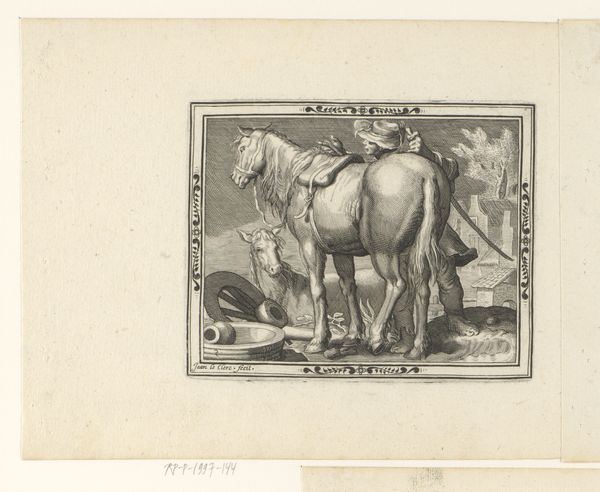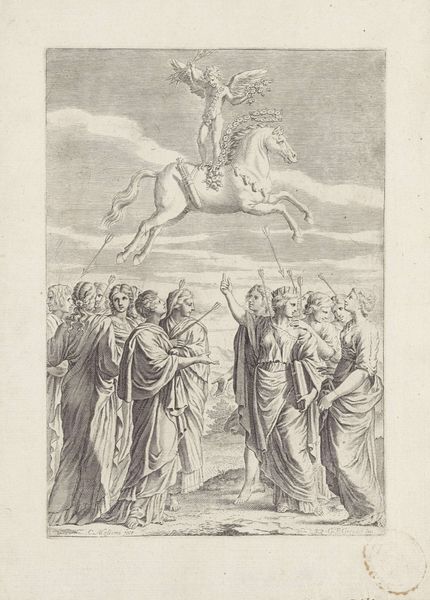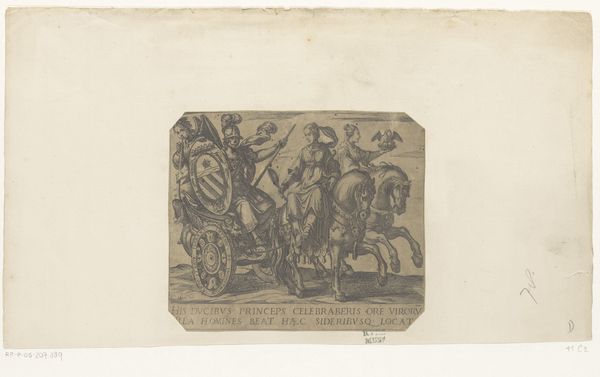
print, engraving
#
narrative-art
# print
#
old engraving style
#
figuration
#
personal sketchbook
#
northern-renaissance
#
engraving
Dimensions: height 194 mm, width 248 mm
Copyright: Rijks Museum: Open Domain
This engraving, titled "Zoon op de rug van de ezel, de vader te voet" (Son on the back of the donkey, the father on foot), was made by Karel van Mallery in the late 16th or early 17th century. It’s an image built from precisely cut lines into a copper plate, then inked and printed onto paper. The material of the print, and the means of its production, are central to its meaning. Mallery was part of a well-established printmaking industry. This was a system of production, involving not just technical mastery but also labor and distribution. The image itself speaks to this dynamic, showing a social hierarchy – the father humbled, the son elevated – observed and codified by the artist. Note the reactions of the onlookers, who seem to be making a judgment. Prints like this one were not simply artworks, they were a form of social commentary, rendered in a way that could be widely disseminated. The very process of printmaking mirrors the social dynamics depicted, reflecting a world of roles, expectations, and judgments.
Comments
No comments
Be the first to comment and join the conversation on the ultimate creative platform.
